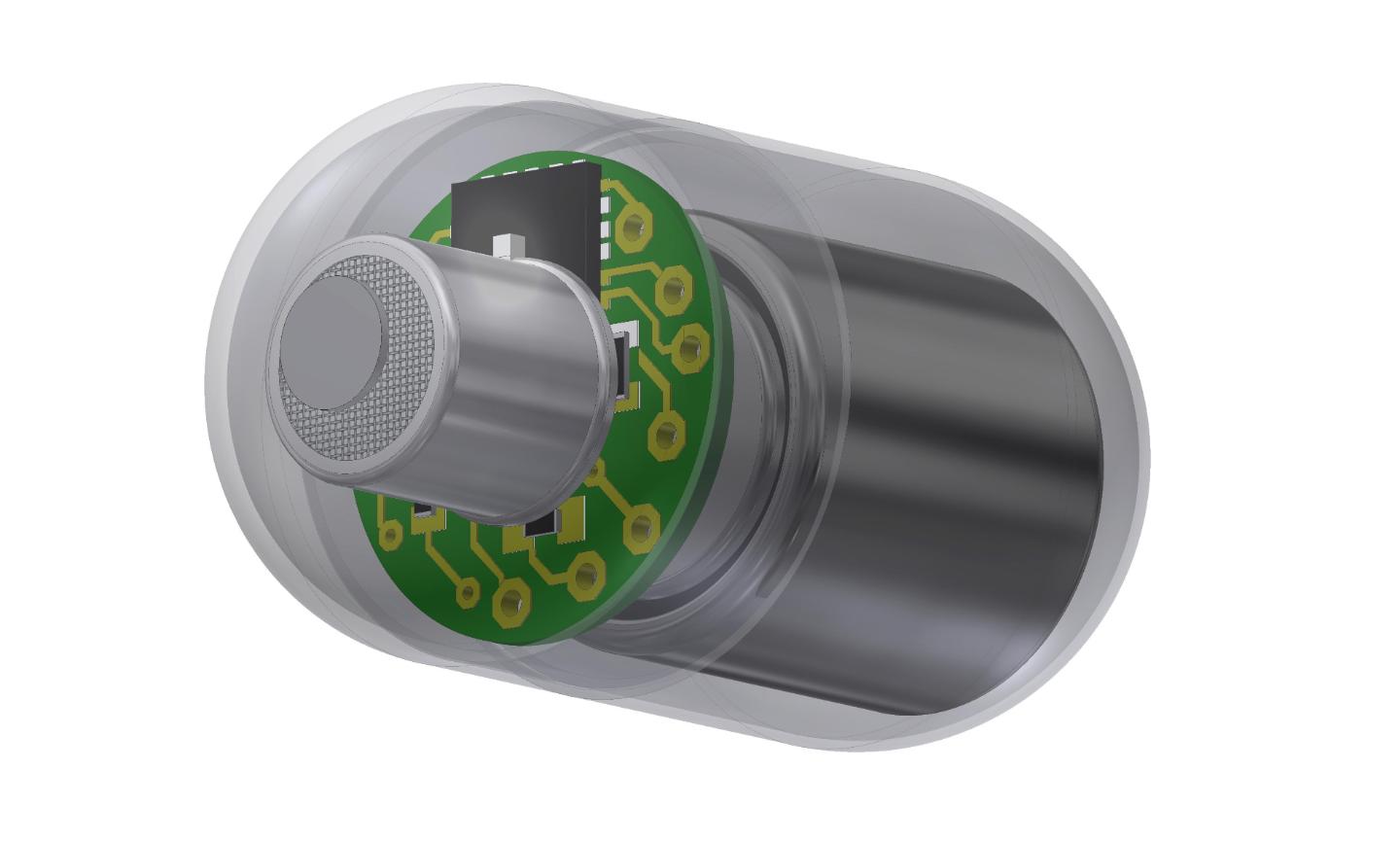.jpg)
 Illustration of a swallowable capsule with built-in gas sensor, microprocessor and wireless high-frequency transmitter. Image: Nam Ha. Illustration of a swallowable capsule with built-in gas sensor, microprocessor and wireless high-frequency transmitter. Image: Nam Ha.
Illustration of a swallowable capsule with built-in gas sensor, microprocessor and wireless high-frequency transmitter. Image: Nam Ha. Illustration of a swallowable capsule with built-in gas sensor, microprocessor and wireless high-frequency transmitter. Image: Nam Ha.
Intestinal gases have been linked to colon cancer, irritable bowel syndrome and inflammatory bowel disease, and could potentially be used as key biomarkers for assessing overall health.
The new technology – developed by researchers from RMIT University and Monash University – measures the concentration of selected intestinal gases through a swallowable capsule with a built-in gas sensor, microprocessor and wireless high-frequency transmitter.
Lead investigator, RMIT’s Professor Kourosh Kalantar-zadeh, said current non-invasive methods of measuring intestinal gas – such as breath testing – were unreliable.
“We know gut microorganisms produce gases as a by-product of their metabolism, but we understand very little about how that affects our health,” he said.
“Being able to accurately measure intestinal gases could accelerate our knowledge about how specific gut microorganisms contribute to gastrointestinal disorders and food intake efficiency, enabling the development of new diagnostic techniques and treatments.
“But these high-tech capsules could also help people work out precisely how particular foods affect their guts.
“With nearly half of Australia’s population complaining of digestive problems in any 12 month period, this technology could be the simple tool we need to methodically tailor our diets to our individual bodies and improve our digestive health.”
Animal trials have demonstrated the effectiveness and safety of the capsules, which transmit data as they move through the gut to a handheld device such as a mobile phone, before passing out of the body.
The researchers from the MicroNano Research Facility and Monash have detailed the technology in an article published in Trends in Biotechnology, which also describes a second novel method of analysing intestinal gases, using “in vitro fermentation”.
“More research is needed to assess the long-term performance of these techniques and test the efficacy of the gas capsules in human trials,” Professor Kalantar-zadeh said.
“But because both techniques are non-invasive, they could have a significant impact on the medical industry and public health sectors, leading to new point-of-care diagnostics and diet- or drug-based therapies for gastrointestinal diseases.”
Professor Kalantar-zadeh, from the School of Engineering, said the capsule had a strong Australian origin.
“The CSIRO has developed different gas capsule technologies for ruminants – animals such as cows and sheep that can acquire nutrients from plant-based food by fermenting it in a specialised stomach prior to digestion – but the RMIT-Monash research is focused on capsules suitable for humans,” he said.


RMIT University acknowledges the people of the Woi wurrung and Boon wurrung language groups of the eastern Kulin Nation on whose unceded lands we conduct the business of the University. RMIT University respectfully acknowledges their Ancestors and Elders, past and present. RMIT also acknowledges the Traditional Custodians and their Ancestors of the lands and waters across Australia where we conduct our business - Artwork 'Sentient' by Hollie Johnson, Gunaikurnai and Monero Ngarigo.
Learn more about our commitment to Indigenous cultures